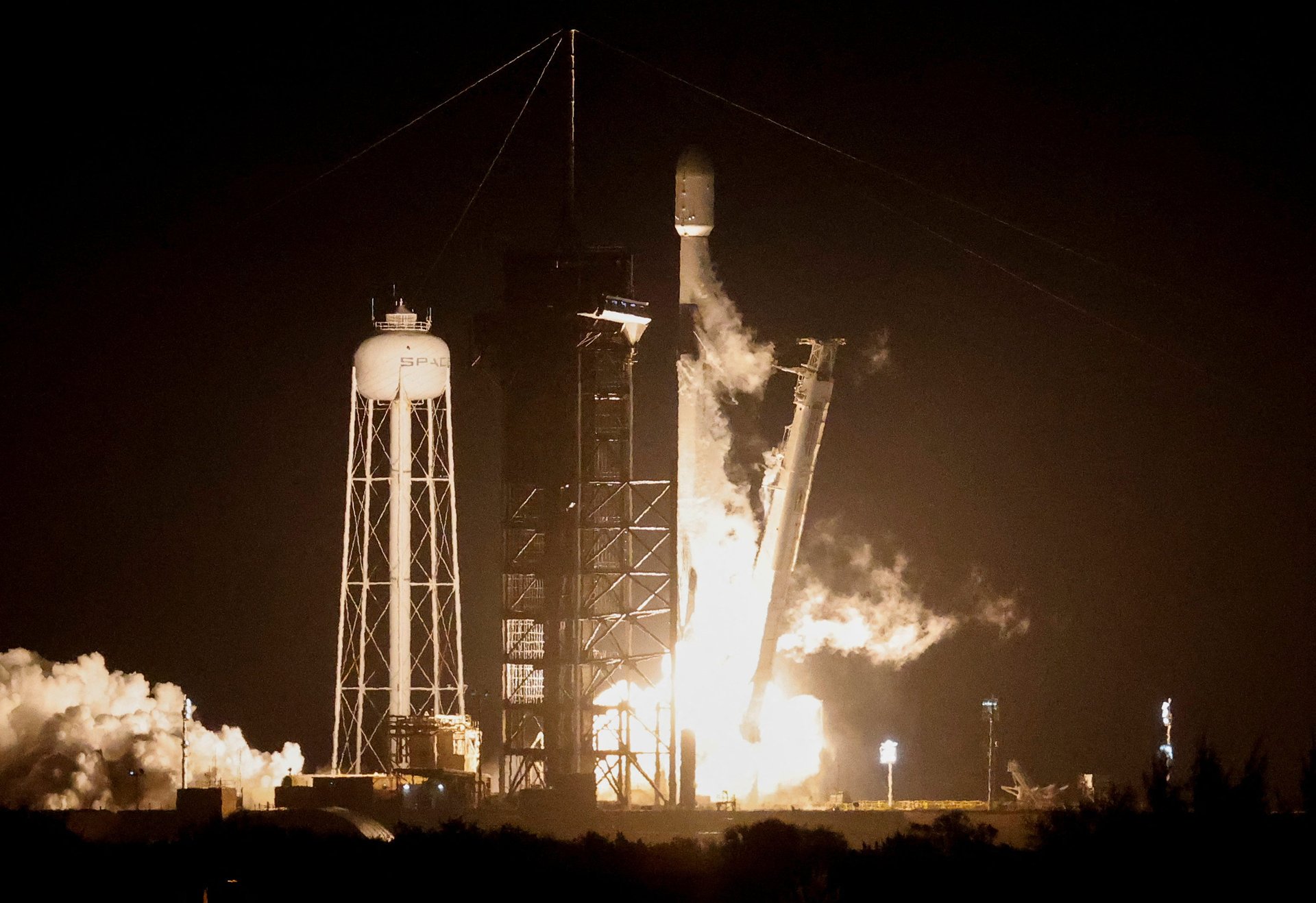SpaceX just launched the Odysseus lander to become the first private spacecraft on the moon
The launch by Elon Musk's company was initially set for a day earlier, but was delayed due to an issue with the spacecraft's methane fuel

SpaceX, the aerospace company founded by Elon Musk, is aiming to make lunar history.
Suggested Reading
A SpaceX Falcon 9 rocket successfully launched a lunar lander made by Houston-based Intuitive Machines into space early Thursday morning. If successful, it would be the first private spacecraft to land on the moon. It would also be the first time the US has returned to the moon’s surface since the Apollo 17 mission in 1972.
Related Content
While the launch was initially set to take off on Wednesday, it was delayed due to an issue with the lander’s methane fuel. A day later the mission went on as planned.
The Falcon 9 rocket launched Odysseus into space from NASA’s Kennedy Space Center in Florida at 1:05am ET. It will take Odysseus six days to reach lunar orbit. It is then expected to land on the moon’s south pole on Feb. 22, according to the news site Space.
The spacecraft is a hexagonal cylinder measuring 4.0 meters tall (roughly 13 feet) and 1.57 meters wide (5 feet), according to NASA. The Odysseus lander weighed 1908 kg (4,206 pounds) at launch.
Odysseus, which is carrying research and data collection instruments as well as an art project from Jeff Koons, will be operational for about 14 earth days after it lands on the moon.
The first stage of the Falcon 9 rocket was able to separate itself from the spacecraft and has already landed successfully back in Florida. This was the 18th flight for the first stage booster, according to SpaceX.
A brief history of private attempts to reach the moon
All lunar landing attempts made by private companies have so far failed.
🌕 A malfunction in the United Launch Alliance’s Peregrine lander’s propulsion system last month made it impossible for it to reach the moon.
🌗 Japan-based ispace lost contact with its lunar lander as it was in the process of landing on the moon last April.
🌘 And Israel’s Beresheet crashed into the moon’s surface during its landing attempt in 2019.
